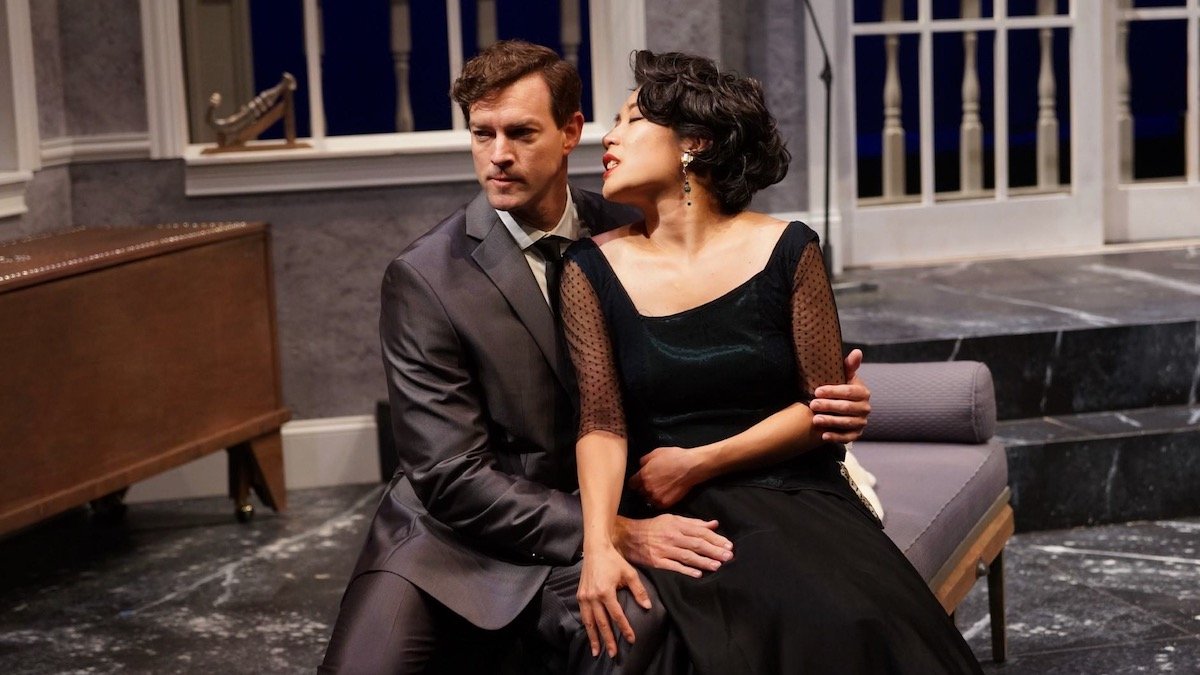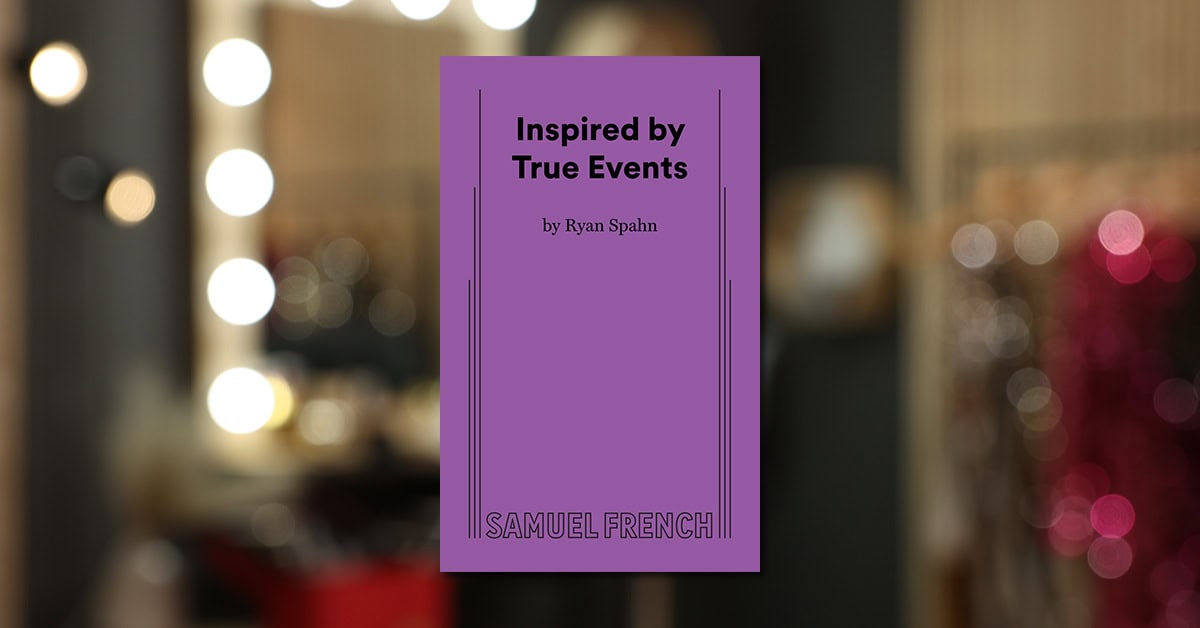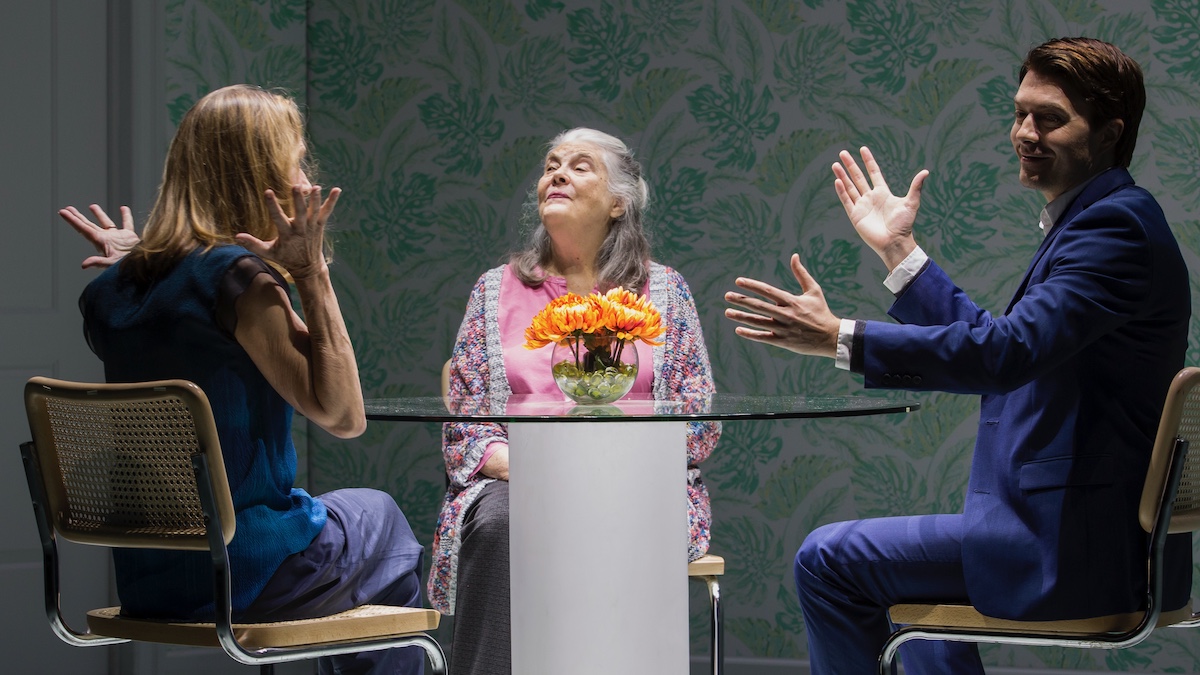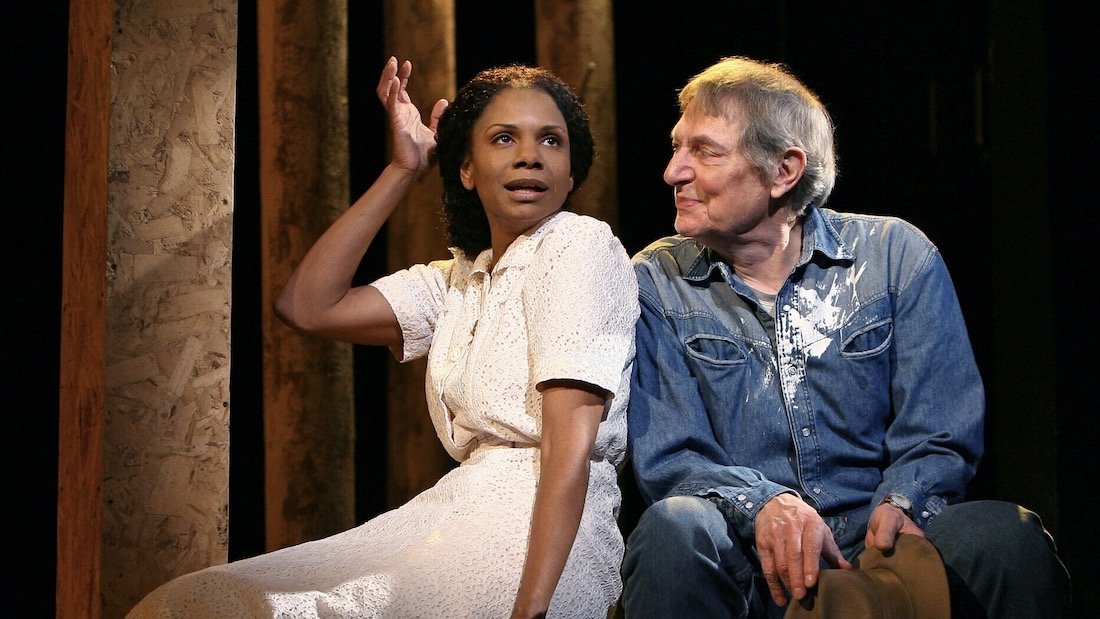
Agatha Christie was brought up to be a proper upper-class mother – but the first World War broke the pattern of her life. She began writing while working as a nurse, which meant that she was writing at a time of great transition for the world; power structures had crumbled, and the European ideal of the “Victorian woman” had fallen apart – yet no new model had taken its place. In her stories, Christie captured the nuances and ambiguities of 20th-century social life, helping to define fictional female characters as ambitious and maverick as the writer was herself.
Read on to discover some of Christie’s fearless, determined female characters. You just might find your next dream role!
…
Barbara Amory
BARBARA. My dear Aunt Caroline, take it from me, a girl simply can’t have too much red on her lips. She never knows how much she’s going to lose in the taxi coming home.
Appears in: Black Coffee (US/UK)
Though she is not the central figure of the play in which she appears, Barbara Amory is worth mentioning here. She rejects the Victorian standards of previous generations in favor of a more modern life. Her dialogue is as unrestricted as her manner; in Black Coffee, Barbara hardly thinks before making a biting remark.
Barbara stands in opposition to Aunt Caroline, a fussy-but-kind maternal figure who holds firm to tradition. Their dynamic highlights a contrast between the old Victorian way of life and the more modern feminine image that was on the rise in the 1920s. Her tactless comments lead her to become one of the suspects in Hercule Poirot’s investigation in the play.
Clarissa Hailsham-Brown
CLARISSA. How extraordinary it is; all my life nothing has really happened to me and tonight I’ve had the lot. Murder, police, drug addicts, invisible ink, secret writing, almost arrested for manslaughter and very nearly murdered. You know, in a way, it’s almost too much all in one evening.
Appears in: Spider’s Web (US/UK)
Spider’s Web is something of a unique entry in the Christie canon, in its blending of comedy with crime thriller. The play was written at the request of Margaret Lockwood, a film star who had never appeared before on the West End. With some set up from Lockwood’s agent, the star had a restaurant meeting with Christie, where she requested a role in a “comedy thriller.” Lockwood’s character, Clarissa, was named after Christie’s mother, who died about 25 years prior to the play’s opening.
In the show, Clarissa Hailsham-Brown is a maverick woman given to pranks. She’s prone to spinning tales and imagining a life that’s much more exciting than her own — that is, until a murder occurs in her very own household, and she’s forced to realize that the facts are much more interesting than the fiction. She’s also inspiring; when she believes that her young stepsister may have committed the crime, she does everything in her power to defend her.
Gerda Cristow
GERDA. I used to pretend to be stupider than I was. I’d stare as though I didn’t understand. But inside, sometimes, I laughed. Because often I knew more than they thought.
Appears in: The Hollow (US/UK)
Gerda is the devoted wife of Dr. John Cristow in The Hollow. John doesn’t appear to think much of her smarts, but she seems to have a more sinister side to herself that she keeps under a tight wrap. After the killing, Gerda is discovered at the scene of the crime, holding the revolver. Gerda is accused of murder, but Henrietta comes to her defense.
Gerda is devoted and loyal, to the point of flaw. She goes to extreme lengths to preserve her place beside the person she loves. She is also cunning and uses deceptive tactics to steer the beliefs of those around her. Spoiler alert: In a last-ditch effort, she tries to snuff out a witness with poison, but in the chaos of the moment, she accidentally drinks that very poison herself.
Henrietta Angkatell
HENRIETTA. If this particular fact has no bearing on the case, and I don’t see how it can have, is there any necessity to make it public?
Appears in: The Hollow (US/UK)
An unhappy game of Follow the Leader explodes into murder one weekend at The Hollow, the home of Sir Henry and Lucy Angkatell. Dr. John Cristow is at the center of the trouble when all of his life’s loves are united in a single room. Henrietta, a prominent sculptor, is John’s mistress. He obviously pines for her, until a film star walks into the room.
Henrietta, a deeply loyal friend and lover, has refined powers of perception. As an artist, she has an eye for the way a room is laid out, and pays good attention to the details. When she realizes that somebody dear to her might have committed a murder, she does what she can to help cover the crime. Yet, when the inspector comes to her for comment, she speaks the truth, pursuing justice. In The Hollow, Henrietta is a woman whose heart is unfairly caught in the crossfire of a tangled web of passions.
Jacqueline de Severac (Jackie)
JACKIE. I see now why one must do no murder – it means you aren’t safe any more. Once you’ve learnt how to kill, you’d do it again and again – and again…
Appears in: Murder on the Nile (US/UK)
At the top of Murder on the Nile, Jackie is introduced from Kay’s perspective. Jackie has stalked Kay and Simon since their marriage as a form of punishment towards Kay for stealing her beloved. Onboard the ship, Jackie is s
talwart about proving the true identity of the murderer. And yet, at every turn, Jackie’s attempts to solve the case with the company on the ship have a perplexing effect — she constantly complicates the mystery, rather than resolving dangling questions. It’s only when the murdered woman’s uncle explains all that her true identity is revealed.
Major spoiler: Jackie and Simon, together, are responsible for the murders aboard the ship. Jackie is directed towards spiritual healing at the end of the play — and eventually turns herself in. She is a fascinating character, who acts out of utter heartbreak and jealousy, and whose plotting powers are hieroglyphic in their complexity.
Kay Ridgeway-Mostyn
KAY. I don’t see how you ever get any money at all when you’re so rude.
Appears in: Murder on the Nile (US/UK)
Murder on the Nile is Christie’s three-act murder mystery based on the novel Death on the Nile. Kay Ridgeway-Mostyn shepherds the story at the start of the play — she’s one of the richest women in all of England, and at the curtain’s rise she’s on a honeymoon cruise down the Nile with her new husband, Simon. The idyllic scenery is shattered by a brutal killing, and then the classic Christie thriller engine is off to the races. Kay is the kind of person who has gotten everything she’s asked for all throughout her life — and when her ex-best friend, Jackie, started dating Simon, Kay decided that she wanted the man all to herself. Kay’s character is a rewrite of Linnet Ridgeway-Doyle from the source novel.
Perfect for a classic leading lady, Kay is all elegance and poise, with a dash of the pretentiousness that comes with ultra-rich status.
Laura Warwick
LAURA. You needn’t believe me. You needn’t believe a word I say. For all you know, I might be making it all up.
Appears in: The Unexpected Guest (US/UK)
A stranger runs his car into a ditch and walks into a nearby house, discovering Laura Warwick standing over the dead body of her wheelchair-bound husband. She admits to murder, and the unexpected guest offers to help her invent a cover story. As the events of the play unfold, however, it becomes clear that Laura is covering for someone – the only question is who. And the house is full of suspects.
Laura is keen and deftly steers her murder mystery from the very start. With the arrival of the mysterious guest, Laura jumps into the line of fire. All throughout the play, the men in the house are shown to be a bit more squeamish about the murder than the women of the house – particularly Laura, who remains composed at the prospect of her husband having been killed. She even manages to charm Michael Starkwedder – the Unexpected Guest – into helping with the cover-up.
Louise (the Maid)
LOUISE. It was a joke, was it not, what you said? Some jokes are very funny. That one was not.
Appears in: Murder on the Nile (US/UK)
Louise is Kay Ridgeway-Mostyn’s maid, and one of the primary suspects in Murder on the Nile (though “primary” is perhaps overstatement; the play is bursting at the seams with criss-crossing potential motives for the murder). Louise is in the cabin next door to the murder, but when she’s questioned by investigating company about what she saw, she seems to hold her tongue. In a later scene with the killer, it is revealed that Louise is attempting blackmail – she will say whatever she needs to say in order to survive.
Louise is extremely quick-witted, and speaks both French and English. She infuses subtextual meaning into her dialogue in certain opportune moments, attempting to win herself a fortune — she even gets the killer to promise to protect her in front of her fellow passengers on the ship. Unfortunately, her dark tactics — Christie thought of blackmail as one of the absolute lowest crimes — prove to have fatal consequences. She’s a great role for a comic actress who wants to explore more sinister undertones.
Lucia Amory
LUCIA. You must go! You don’t know what harm you may do by remaining!
POIROT. Harm…to you?
LUCIA. To all of us. Monsieur Poirot, I can’t explain further, but I beg you to take my word that it is so. From the first moment I saw you, I trusted you. Please…
Appears in: Black Coffee (US/UK)
Lucia Amory is at the center of the crime in Black Coffee, but the motives behind her actions are abundantly unclear. Like Laura from The Unexpected Guest, Lucia is very obviously hiding something. Spoiler alert: she’s under the threat of blackmail, and will do whatever her blackmailer asks — but when she gets an audience with Hercule Poirot, that master detective, Lucia is able to send subtle signals that help Poirot discover her condition, and ultimately resolve the murder.
What’s inspiring about Lucia is her determination to save the person she loves, fearlessly placing herself in vulnerable situations to keep her husband out of harm’s way.
Miss Mildred Peake
MISS PEAKE. Curious how often people can’t see what’s right in front of their eyes.
Appears in: Spider’s Web (US/UK)
Christie’s Spider’s Web is a good ol’ fashioned crime tale, a la Miss Marple, though a healthy dose of humor is woven into the play’s suspenseful plot. The action takes place in the drawing room of Copplestone Court, a home that the Hailsham-Brown family is renting in Kent at a very low cost.
Miss Mildred Peake is the gardener on the grounds; due to years of manual labor, she is quite literally a strong woman. Big, hearty and raised in the countryside, she helps Clarissa Hailsham-Brown throw out some unwanted house guests. There’s a mysterious air to this woman as well. Spoiler alert: when a body is discovered, Miss Peake feigns hysteria, but returns in the evening to hide the body — moving it by herself — in order to protect Clarissa from accusations. Around this time, Miss Peake also reveals her true identity, to the shock of the denizens of the Hailsham-Brown household. Miss Peake, though she projects an aloof air, is always a few steps ahead of everyone, even the inspector.
Sandra Grey
SANDRA. Rats in a trap, that’s what we are. Rats in a trap.
Appears in: The Rats (US/UK), part of the triple bill The Rule of Three (US/UK)
Adulterous lovers Sandra and David are called to the Torrances’ flat for evening drinks. However, no one is home. What first appears to be a simple mix up of dates turns to something far more sinister when the pair are locked in and, all at once, framed for murder.
Sandra Grey is a fierce character. She left her first husband for a second, and is presently pursuing an extra-marital affair with David, in spite of that second husband. Sandra is clever, and entertains several possibilities as to why she and David end up trapped in the Torrances’ flat.
Once she realizes that she’s caught, her ferocity comes out, and Sandra shows her true character: she will do anything to have her way, to find a sense of personal freedom. At the end of the play, as their world is falling to shreds around them, Sandra and David turn their anger and frustration on each other.
Veronica Cray
VERONICA. If I can’t have you, nobody else shall have you, John. Understand that.
Appears in: The Hollow (US/UK)
Veronica Cray is a film star. She’s moved into a cottage next to The Hollow, and shows up there one evening claiming that she’s lost electricity in her apartment, and that her lighter is not working. Veronica and Dr. John Cristow used to have an intensely passionate relationship, a fact which Veronica is unashamed to reveal in front of company.
Later in the play, Veronica lights matches, which begs the question — what’s she hiding? Does she want to leave her husband and marry John? Or is there some darker design that she has in mind?
Veronica is a deeply vain character, though the other characters in The Hollow describe her acting style as “highly intellectual.” She has a magnetic quality to her, and is indeed deeply attractive to John. She exhibits brilliance in her plot to reunite with John, whom she loved many years ago.
…
For more delectable murder mysteries, check out the Agatha Christie Collection on the Concord Theatricals website in the US or UK.
Header Image: 2019 Park Square Theater production of The Rule of Three (Petronella J. Ytsma)

Inspired by True Events: A Conversation with Playwright Ryan Spahn

Plays About Technology

